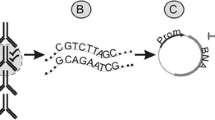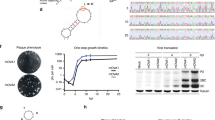Abstract
In the context of clinical gene transfer using viral vectors, the risk of memory antivector immunity is often poorly appreciated. The immunological past of the patient, the site of injection, and the vector dose will play intertwined and decisive roles in the safety and efficacy of treatment. To circumvent the draw-backs due to the ubiquitous human adenovirus (HAd) memory immunity, we believe that vectors derived from canine adenovirus type 2 (CAV-2) will be more clinically useful than those derived from HAds based, in part, on the potential lack of immunological memory. CAV-2 is not a human pathogen in spite of the approx 100,000 yr of cohabitation of humans with dogs. During the last 8 yr, we found that CAV-2 vectors preferentially transduced neurons in the central nervous system (CNS) of several species, and had a surprisingly efficient level of axoplasmic transport. CAV-2 vectors also lead to greater than 1 yr transgene expression in the immunocompetent rat CNS—without immunosuppression. However, more immediate harm can be caused to a patient via an acute and/or chronic vector-induced cellular infiltration in the CNS than by the normal progression of most neurodegenerative disorders. In this context, we continue to assess the clinical potential of CAV-2. This mini-review addresses our analysis of the interaction of CAV-2 vectors with human memory immunity and monocyte-derived dendritic cells.
Similar content being viewed by others
References
Muruve, D. A. (2004) The innate immune response to adenovirus vectors. Hum. Gene Ther. 15, 1157–1166.
Klonjkowski, B., Gilardi-Hebenstreit, P., Hadchouel, J., et al. (1997) A recombinant E1-deleted canine adenoviral vector capable of transduction and expression of a transgene in human-derived cells and in vivo. Hum. Gene. Ther. 8, 2103–2115.
Kremer, E. J. (2004) CAR chasing: canine adenovirus vectors-all bite and no bark? J. Gene Med. 6, S139-S151.
Kremer, E. J., Boutin, S., Chillon, M., and Danos, O. (2000) Canine adenovirus vectors: an alternative for adenovirus-mediated gene transfer. J. Virol. 74, 505–512.
Soudais, C., Skander, N., and Kremer, E. J. (2004) Long-term in vivo transduction of neurons throughout the rat central nervous system using novel helper-dependent CAV-2 vectors. FASEB J. 18, 391–393.
Soudais, C., Laplace-Builhe, C., Kissa, K., and Kremer, E.J. (2001) Preferential transduction of neurons by canine adenovirus vectors and their efficient retrograde transport in vivo. FASEB J. 15, 2283–2285.
Benson, S. D., Bamford, J. K., Bamford, D. H., and Burnett, R. M. (2004) Does common architecture reveal a viral lineage spanning all three domains of life? Mol. Cell. 16, 673–685.
Keriel, A., Rene, C., Galer, C., Zabner, J., and Kremer, E.J. (2006) Canine adenovirus type 2 vectors for lung-directed gene transfer: efficacy, immunity and duration of transgene expression using helper-dependent vectors. J. Virol. 80, 1487–1496.
Parks, R.J., Chen, L., Anton, M., Sankar, U., Rudnicki, M. A., and Graham, F. L. (1996) A helper-dependent adenovirus vector system: removal of helper virus by Cre-mediated excision of the viral packaging signal. Proc. Natl. Acad. Sci. USA 93, 13,565–13,570.
Kochanek, S., Clemens, P. R., Mitani, K., Chen, H. H., Chan, S., and Caskey, C. T. (1996) A new adenoviral vector: replacement of all viral coding sequences with 28 kb of DNA independently expressing both full-length dystrophin and beta-galactosidase. Proc. Natl. Acad. Sci. USA 93, 5731–5736.
Amalfitano, A. and Parks, R. J. (2002) Separating fact from fiction: assessing the potential of modified adenovirus vectors for use in human gene therapy. Curr. Gene Ther. 2, 111–133.
Fabry, C. M., et al. (2005) A quasi-atomic model of human adenovirus type 5 capsid. Embo J. 24, 1645–1654.
Horwitz, M. (1996) Adenoviruses. In: Fields Virology, (Fields, B. and Knipe, D., eds.), Raven Press, Philadelphia, PA, pp. 2149–2171.
Shenk, T. (1996) Adenoviridae: the viruses and their replication. In: Fields Virology, (Fields, B. and Knipe, D., eds.), Raven Press, Philadelphia, PA, pp. 2111–2148.
Worgall, S., Wolff, G., Falck-Pedersen, E., and Crystal, R. G. (1997) Innate immune mechanisms dominate elimination of adenoviral vectors following in vivo administration. Hum. Gene Ther. 8, 37–44.
Schmitz, H., Wigand, R., and Heinrich, W. (1983) Worldwide epidemiology of human adenovirus infections. Am. J. Epidemiol. 117, 455–466.
Varghese, R., Mikyas, Y., Stewart, P.L., and Ralston, R. (2004) Postentry neutralization of adenovirus type 5 by an antihexon antibody. J. Virol. 78, 12,320–12,332.
Gahery-Segard, H., Juillard, V., Gaston, J., et al. (1997) Humoral immune response to the capsid components of recombinant adenoviruses: routes of immunization modulate virus-induced Ig subclass shifts. Eur. J. Immunol. 27, 653–659.
Sumida, S. M., Truitt, D. M., Lemckert, A. A., et al. (2005) Neutralizing antibodies to adenovirus serotype 5 vaccine vectors are directed primarily against the adenovirus hexon protein. J. Immunol. 174, 7179–7185.
Fender, P., Kidd, A. H., Brebant, R., Oberg, M., Drouet, E., and Chroboczek, J. (1995) Antigenic sites on the receptor-binding domain of human adenovirus type 2 fiber. Virology 214, 110–117.
Segerman, A., Atkinson, J.P., Marttila, M., Dennerquist, V., Wadell, G., and Arnberg, N. (2003) Adenovirus type 11 uses CD46 as a cellular receptor. J. Virol. 77, 9183–9191.
Dechecchi, M.C., Tamanini, A., Bonizzato, A., and Cabrini, G. (2000) Heparan sulfate glycosaminoglycans are involved in adenovirus type 5 and 2-host cell interactions. Virology 268, 382–390.
Nemerow, G. W. and Stewart, P. L. (1999) Role of alpha(v) integrins in adenovirus cell entry and gene delivery. Microbiol. Mol. Biol. Rev. 63, 725–734.
Wohlfart, C. (1988) Neutralization of adenoviruses: kinetics, stoichiometry, and mechanisms. J. Virol. 62, 2321–2328.
Bauer, U., Flunker, G., Bruss, K., et al. (2005) Detection of antibodies against adenovirus protein IX, fiber, and hexon in human sera by immunoblot assay. J. Clin. Microbiol. 43, 4426–4433.
Abad, L. W., Neumann, M., Tobias, L., Obenauer-Kutner, L., Jacobs, S., and Cullen, C. (2002) Development of a biosensor-based method for detection and isotyping of antibody responses to adenoviral-based gene therapy vectors. Anal. Biochem. 310, 107–113.
Stallwood, Y., Fisher, K. D., Gallimore, P. H., and Mautner, V. (2000) Neutralisation of adenovirus infectivity by ascitic fluid from ovarian cancer patients. Gene Ther. 7, 637–643.
Gahery-Segard, H., Molinier-Frenkel, V., Le Boulaire, C., et al. (1997) Phase 1 trial of recombinant adenovirus gene transfer in lung cancer. Longitudinal study of the immune responses to transgene and viral products. J. Clin. Invest. 100, 2218–2226.
Harvey, B. G., Worgall, S., Ely, S., Leopold, P. L., and Crystal, R. G. (1999) Cellular immune responses of healthy individuals to intradermal administration of an E1–E3- adenovirus gene transfer vector. Hum. Gene Ther. 10, 2823–2837.
Gasque, P. (2004) Complement: a unique innate immune sensor for danger signals. Mol. Immunol. 41, 1089–1098.
Cichon, G., Boeckh-Herwig, S., Schmidt, H. H., et al. (2001) Complement activation by recombinant adenoviruses. Gene Ther. 8, 1794–1800.
Frank, M. M. and Fries, L. F. (1991) The role of complement in inflammation and phagocytosis. Immunol. Today 12, 322–326.
Boruchov, A. M., Heller, G., Veri, M. C., Bonvini, E., Ravetch, J. V., and Young, J. W. (2005) Activating and inhibitory IgG Fc receptors on human DCs mediate opposing functions. J. Clin. Invest. 115, 2914–2123.
Van Vugt, M. J., Van den Herik-Oudijk, I. E., and Van de Winkel, J. G. (1998) FcgammaRla-gamma-chain complexes trigger antibody-dependent cell-mediated cytotoxicity (ADCC) in CD5+ B cell/macrophage IIA1.6 cells. Clin. Exp. Immunol. 113, 415–422.
Bergelson, J. M., Cunningham, J. A., Droguett, G., et al. (1997) Isolation of a common receptor for Coxsackie B viruses and adenoviruses 2 and 5. Science 275, 1320–1323.
Shirali, G.S., Ni, J., Chinnock, R. E., et al. (2001) Association of viral genome with graft loss in children after cardiac transplantation. N. Engl. J. Med. 344, 1498–1503.
Chakrabarti, S., Mautner, V., Osman, H., et al. (2002) Adenovirus infections following allogeneic stem cell transplantation: incidence and outcome in relation to graft manipulation, immunosupression, and immune recovery. Blood 100, 1619–1627.
Hierholzer, J. C. (1992) Adenoviruses in the immunocompromised host. Clin Microbiol. Rev. 5, 262–274.
Flomenberg, P., Piaskowski, V., Truitt, R. L., and Casper, J. T. (1995) Characterization of human proliferative T cell responses to adenovirus. J. Infect. Dis. 171, 1090–1096.
Olive, M., Eisenlohr, L. C., and Flomenberg, P. (2001) Quantitative analysis of adenovirus-specific CD4+ T-cell responses from healthy adults. Viral Immunol. 14, 403–413.
Castelli, F. A., Buhot, C., Sanson, A., et al. (2002) HLA-DP4, the most frequent HLA II molecule, defines a new supertype of peptide-binding specificity. J. Immunol. 169, 6928–6934.
Tang, J., Olive, M., Champagne, K., et al. (2004) Adenovirus hexon T-cell epitope is recognized by most adults and is restricted by HLA DP4, the most common class II allele. Gene Ther. 11, 1408–1415.
Smith, C. A., Woodruff, L. S., Rooney, C., Kitchingman, G. R. (1998) Extensive cross-reactivity of adenovirus-specific cytotoxic T cells. Hum. Gene Ther. 9, 1419–1427.
Leen, A. M., Sili, U., Savoldo, B., et al. (2004) Fibermodified adenoviruses generate subgroup cross-reactive, adenovirus-specific cytotoxic T lymphocytes for therapeutic applications. Blood 103, 1011–1019.
Perreau, M. and Kremer, E. J. (2005) Frequency, proliferation, and activation of human memory T cells induced by a nonhuman adenovirus. J. Virol. 79, 14,595–14,605.
Jooss, K., Yang, Y., Fisher, K. J., and Wilson, J. M. (1998) Transduction of dendritic cells by DNA viral vectors directs the immune response to transgene products in muscle fibers. J. Virol. 72, 4212–4123.
Foti, M., Granucci, F., and Ricciardi-Castagnoli, P. (2004) A central role for tissue-resident dendritic cells in innate responses. Trends Immunol. 25, 650–654.
Le Bon, A. and Tough, D. F. (2002) Links between innate and adaptive immunity via type I interferon. Curr. Opin. Immunol. 14, 432–436.
Banchereau, J., Briere, F., Caux, C., et al. (2000) Immunobiology of dendritic cells. Annu. Rev. Immunol. 18, 767–811.
Glasgow, J. N., Kremer, E. J., Hemminki, A., Siegal, G. P., Douglas, J. T., and Curiel, D. T. (2004) An adenovirus vector with a chimeric fiber derived from canine adenovirus type 2 displays novel tropism. Virology 324, 103–116.
Tan, P. H., Beutelspacher, S. C., Xue, S. A., et al. (2005) Modulation of human dendritic-cell function following transduction with viral vectors: implications for gene therapy. Blood 105, 3824–3832.
Rea, D., Schagen, F. H., Hoeben, R. C., et al. (1999) Adenoviruses activate human dendritic cells without polarization toward a T-helper type 1-inducing subset. J. Virol. 73, 10,245–10,253.
Neufeld, E. F. (1991) Lysosomal storage diseases. Annu. Rev. Biochem. 60, 257–280.
Subklewe, M., Paludan, C., Tsang, M. L., Mahnke, K., Steinman, R. M., and Munz, C. (2001) Dendritic cells cross-present latency gene products from Epstein-Barr virus-transformed B cells and expand tumor-reactive CD8(+) killer T cells. J. Exp. Med. 193, 405–411.
Author information
Authors and Affiliations
Corresponding author
Rights and permissions
About this article
Cite this article
Perreau, M., Kremer, E.J. The conundrum between immunological memory to adenovirus and their use as vectors in clinical gene therapy. Mol Biotechnol 34, 247–256 (2006). https://doi.org/10.1385/MB:34:2:247
Issue Date:
DOI: https://doi.org/10.1385/MB:34:2:247




